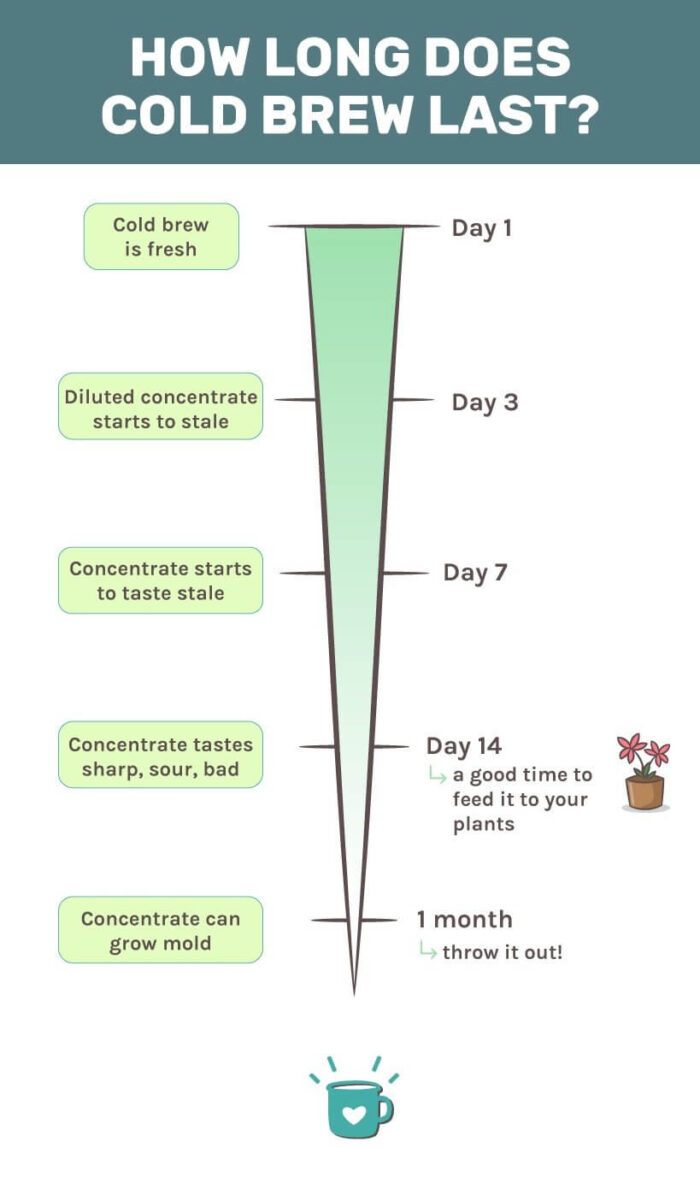Cold brew coffee has surged in popularity for its smoother, less bitter taste compared to traditional hot coffee. By steeping ground coffee in room temperature or cold water for an extended time rather than using heat, a flavorful concentrate emerges without acidic, harsh notes. However, the length of brewing time can dramatically impact finished cold brew’s flavor. So what is the perfect steeping duration? In this post we talk about Cold Brew Steeping Time.
Why Steeping Time Matters
During cold water extraction, coffee solids slowly release various oil-soluble compounds that ultimately comprise taste and aroma. Shorter steeps of 20 hours or below extract mainly bitter, astringent tastes. Longer cold brewing for 24 hours and beyond pulls out more complex sweet, fruity notes while smoothing acidity.
However, over-steeping for multiple days continuously draws out bitter elements and makes cold brew “over-extracted,” compromising quality. Dialing in the right steeping time is crucial to prevent both under and over-extracted cold brew concentrate. The goal is to land in the sweet spot that yields smooth, optimized flavor.
Cold Brew Steep Times Explained
While cold brew ratio, grind size, coffee origin, and water quality all impact results, steeping time serves as the primary flavor dial. Here’s an overview of different approaches:
16-20 Hours
Slowly yields the beginnings of cold brew but mainly harsher compounds. Results in concentrate needing dilution but with some bitterness.
24 Hours
The most common steeping benchmark produces balanced cold brew flavour with detectable sweetness to balance acidity. Dilution optional.
36 Hours
In the “goldilocks zone” of not too little, not too much time, this extracts more complete, smoother flavor but before over-extraction. No dilution needed.
48+ Hours
Maximum extraction yields concentrated flavor but also more bitter elements without off-notes from spoilage. Diluting required. Quality degrades past 3 days.
As you can see, the 12-24 hour window delivers under-extracted concentrate while 36-48 hours represents peak extraction before declining. Within that, factors like preferred concentration, dilution plans, and individual taste preferences help determine ideal times.
How to Figure Out Your Perfect Timing
Start in the 24-36 hour steeping range and take notes:
• Document total steep time, using a precise kitchen timer.
• Note dilution level (if any) prior to evaluating taste.
• Sample cold brew black first before adding any milk, sweeteners, etc.
• Objectively assess aroma and identify primary taste notes, like sweetness, bitterness, acidity.
• Gauge mouthfeel and aftertaste on the finish.
• Consider if longer steeping would reduce undesirable flavors or over-extract.
Adjust in 4-6 hour increments across batches, tracking changes in concentrate at different durations. Key in on your flavor preferences and target the timing that best achieves the intensity, complexity and smoothness you desire.
Don’t forget immersion time once concentrate completes steeping:
• Regard the clock as still ticking once you remove grounds.
• Taste occasionally as concentrate sits refrigerated.
• Note if bitterness or acidity eventually re-emerges or dissipates.
This continues slowly extracting during storage so factor it into your total target hours for peak flavor. Diligently documenting timestamps and taste changes is key to optimizing overall infusion time.
Helpful Tips
Follow these tips for steeping success:
• Use whole bean coffee freshly ground to a coarse consistency to maximize extraction potential.
• Filter water removes impurities that impair taste.
• Steep grounds in glass, stainless steel, ceramic or nonreactive plastic container. No aluminum!
• Agitate concentrate once daily to facilitate even extraction.
• Store in airtight container fully immersed in concentrate once strained.
Start with a concentrate base that allows ideal flavor results before diluting. Controlling input factors like water quality, freshness and grind while steeping enables better assessment of time as the definitive variable.
Keep adjusting steep duration until identifying your “sweet spot” that yields sublime cold brew. Drinking smooth, properly extracted cold brew tapped at its peak makes all the trial and error worth undertaking. So commit to deliberate experimentation to become your own in-house expert at brewing cold brew coffees to suit your unique tastes.

